Architects & Firms
The 12,000-seat Swiss Life Arena may look unapologetically boxy when approached by rail or road. Up close, however, it is enormously fun—not an adjective often associated with the London and Zurich-based practice Caruso St John Architects. Known for architecture that is as intellectually rigorous as it is aesthetically sensitive, the firm’s work often resolves in a commitment to context, be that in a topographical way—as with the Nottingham Contemporary (2009), which superbly marries the engineering of an elevated tramway with the geology of a hill—or in structural expression, as with the St. Jakob Foundation (2018), where balconies play visual games with the historic viaduct immediately adjacent.

Photo © Philip Heckhausen, click to enlarge.
Such contextualism wasn’t easy for the arena, which sits in an environment so hostile that any architectural reference to it would have been nearly impossible. Located five miles northwest of downtown Zurich, the site of the arena is wedged between the highway to Basel and the city’s rail connections to Germany, which squeeze together as they pass through a narrow valley. The facility shares a certain scale with nearby warehouses, but they aren’t much of a context. Nor is the 25-track-wide trainyard to the south. The site is inhospitable, but it is also highly visible: Swiss Life Arena is one of the first buildings seen when entering the city. Caruso St John’s proposal came with a simple conceit: the arena is a tent for entertainment at the edge of town—albeit here, one built of load-bearing concrete walls and containing not one but two hockey rinks.
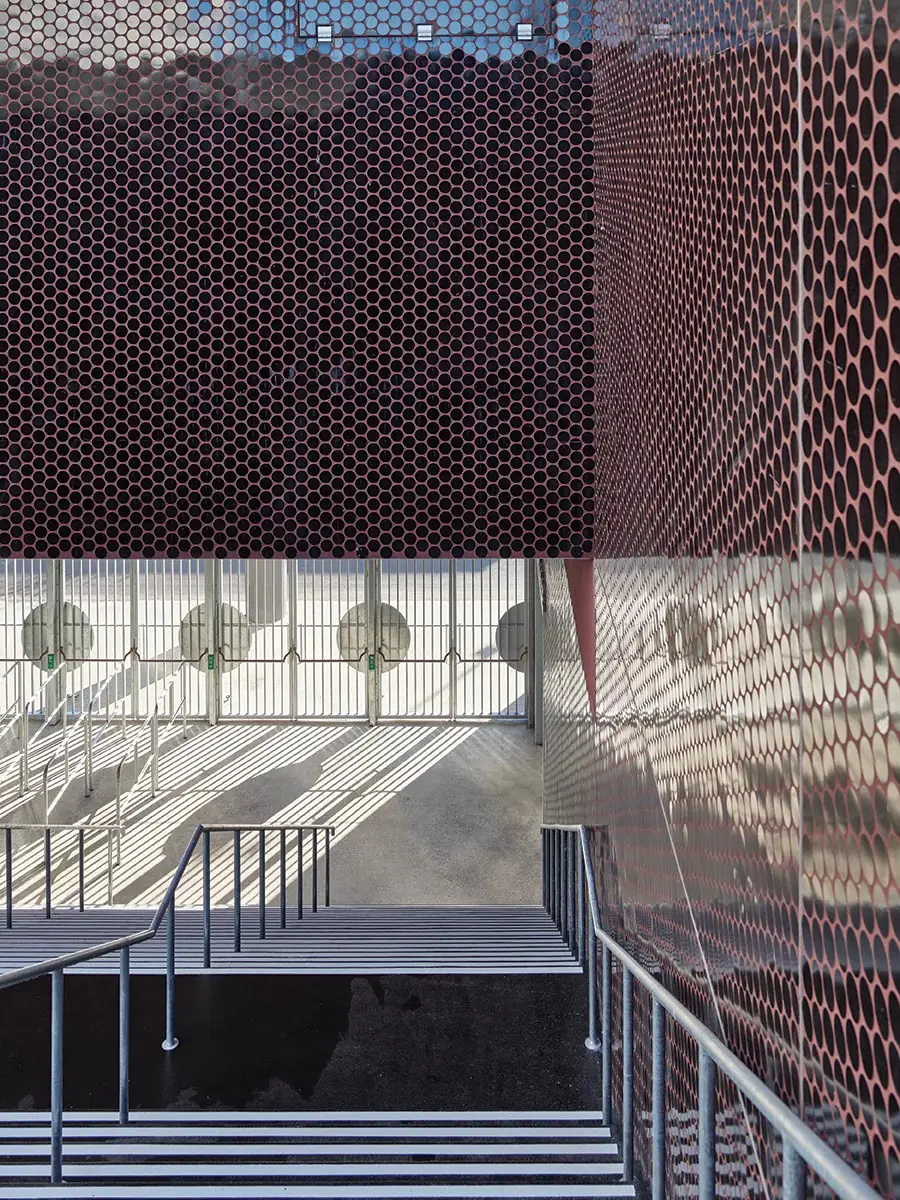
The rooftop terrace is accessed from large outdoor staircases. Photo © Philip Heckhausen
There is something wonderfully familiar about the building. The competition to design it was held just over a decade ago—the same year that London (at that time Caruso St John’s primary base) hosted the 2012 Olympics. Despite some controversy in the buildup to the games, the event itself was a happy cultural moment when architecture (particularly the secondary structures, such as the Velodrome) was at the service of higher human values. The joy and optimism of that period is still discernible in Caruso St John’s new home for the ZSC Lions, despite the long gestation. The design for the 767,000-square-foot arena had to be submitted to a local referendum in 2016, winning with a 56.6 percent share of the vote. But progress stalled as the design-build contract was wrangled over, and seven years passed between the competition and ground-breaking.
The project’s success emerges from its own construction and materiality. Originally, it was to have been built of precast concrete, but Swiss construction company Marti proposed a poured-in-place method—to impressive effect. Around 110,000 tons of the cheapest paper-white concrete, artfully cast, ripples like draped fabric across its facades. The effect is cheeky, similar to what James Wines achieved in the 1970s by designing facades for otherwise boxy BEST discount stores in the United States, but here less conceptual and more decorative.
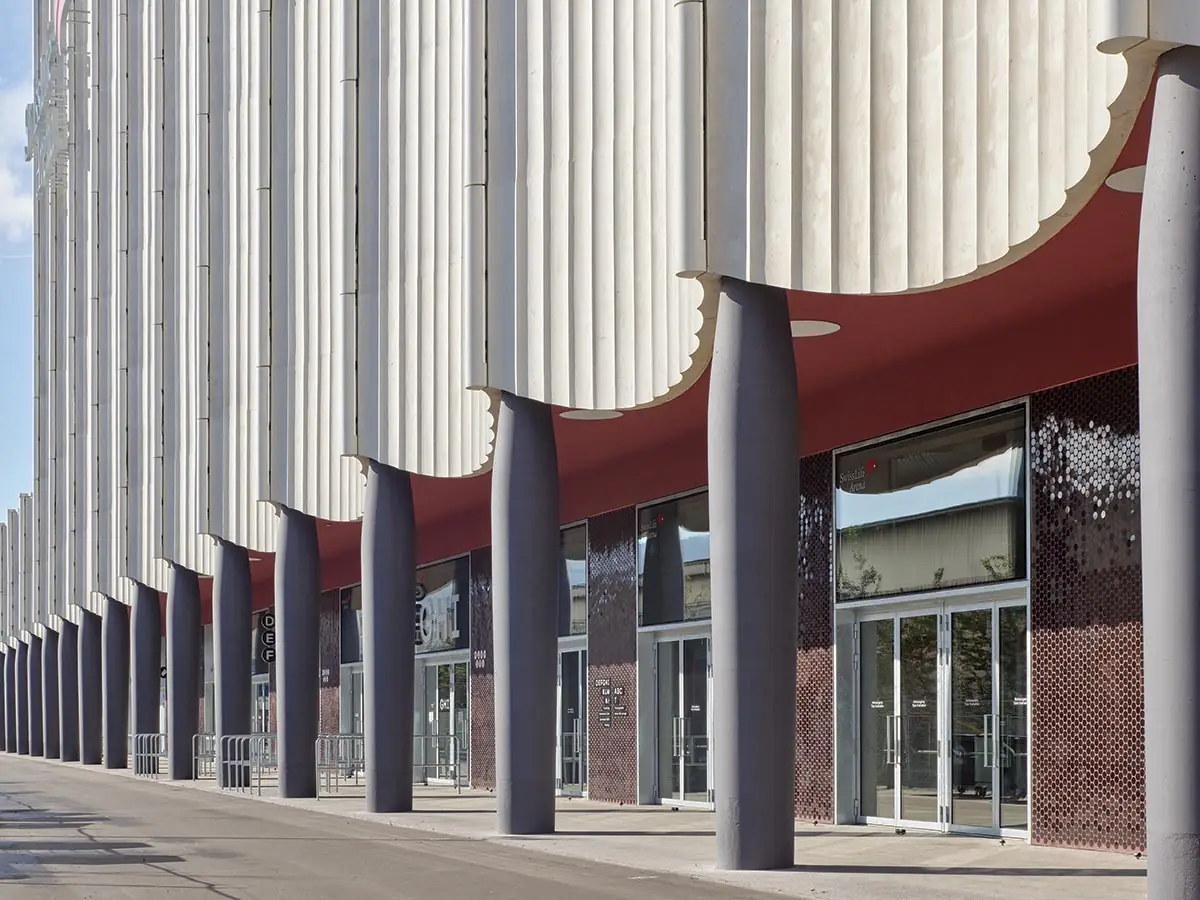
A colonnade of precast columns hold up the tentlike facade of poured-in-place concrete. Photo © Philip Heckhausen
The draped expression around porthole windows on the north and south elevations and elegant curtainlike fluting on the east and west elevations are moments of trompe l’oeil whereby visitors are half-convinced that the concrete is flowing silk. To achieve the effect, Marti steadily filled mesh-lined formwork with continuous pours of 20 feet. It’s a feat of technical bravura, and sadly one from which architect Adam Caruso feels he must distance himself, due to a very particular way of thinking about the material’s contribution to climate change: “If we were to build this today, we would not build with so much concrete,” he says.
Yet the use of concrete is compelling here. It also serves as the arena’s structural shell, supporting the floors and the steel roof truss. The approach was enabled by the fact that most spaces don’t need insulation. Where it is needed—the ground-floor restaurant at the southern end of the building, offices at the northern end, and what is grandly called the “Business Club” but which effectively offers game-time hospitality viewing on the third floor—there’s an inner lining of blockwork or plaster that houses insulation.
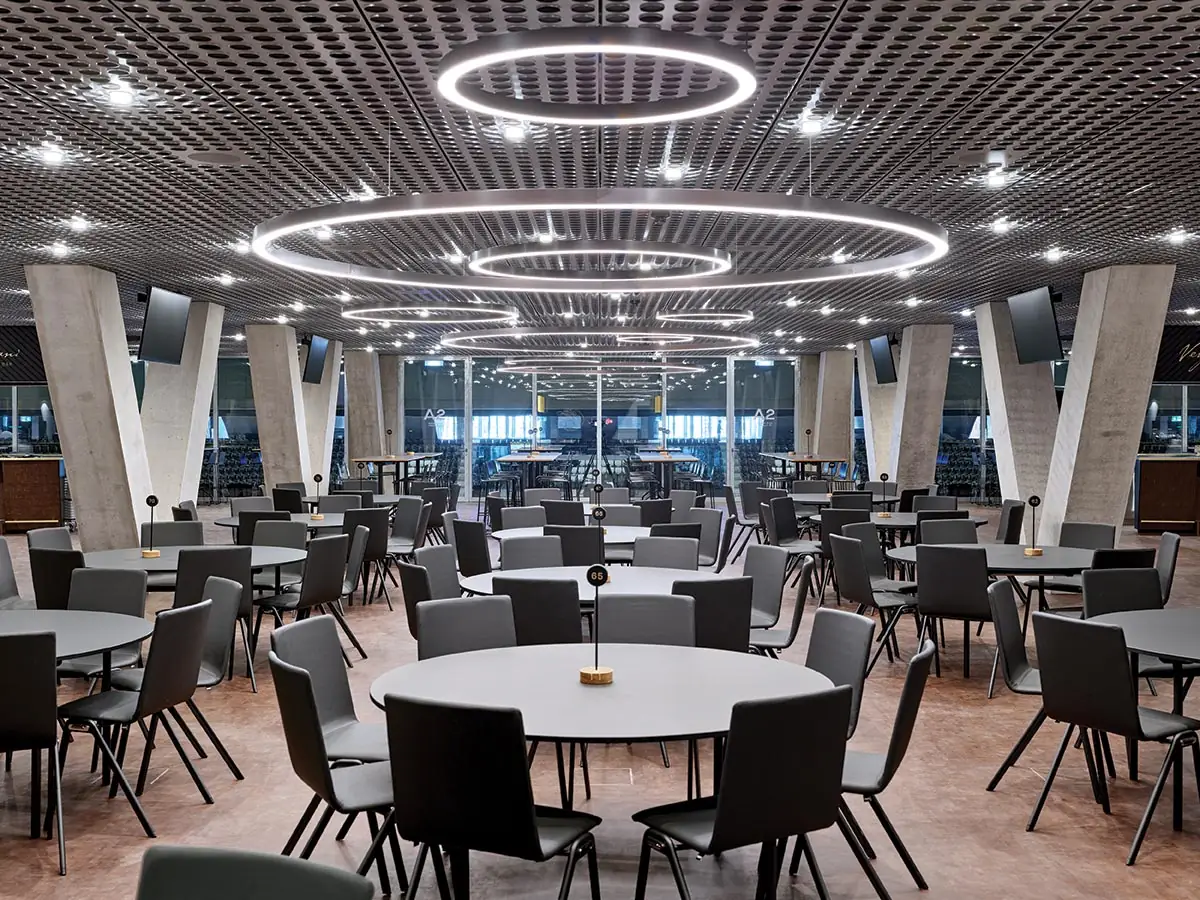
The third-floor Business Club offers views out to the arena. Photo © Philip Heckhausen
On first glance, the arena’s plan appears straightforward, but in fact its organization is quite clever. Hockey rinks often sit at the heart of an arena, with other functions wrapped around them concentrically and then a huge ring of parking. Here the rinks run perpendicular to the main facade rather than in parallel, meaning that the vast majority of entry points, and hence the busiest circulation routes, can be arranged in long arcades to the east and west, each containing nine entrances. These are legible as colonnades, formed from 18-foot-high precast columns onto which the in situ concrete was poured, creating the impression of poles raising the edge of a tent. There are only a handful of parking spaces for staff within the building. Everyone else arrives by tram.
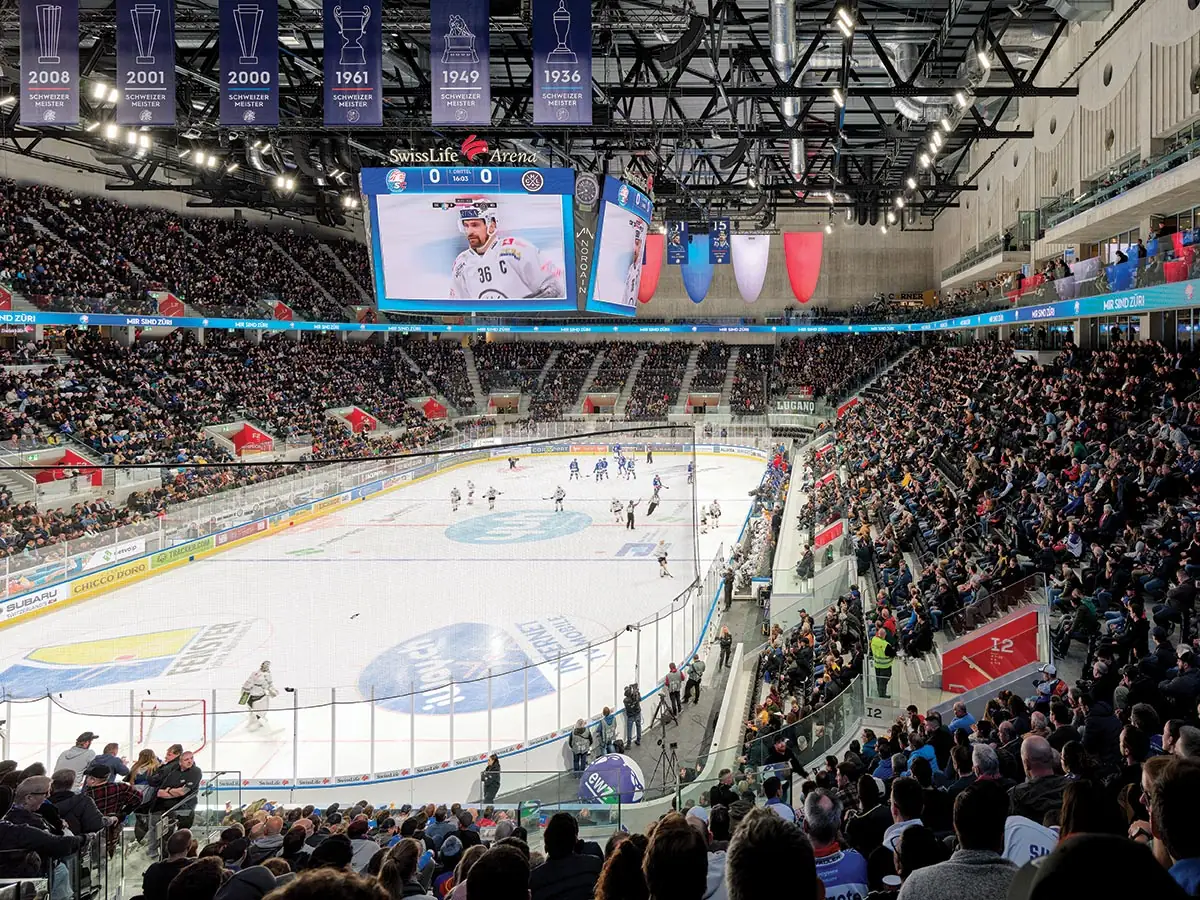
1
The arena’s concrete materiality is carried on through the interiors (1 & 2). Photo © Philip Heckhausen
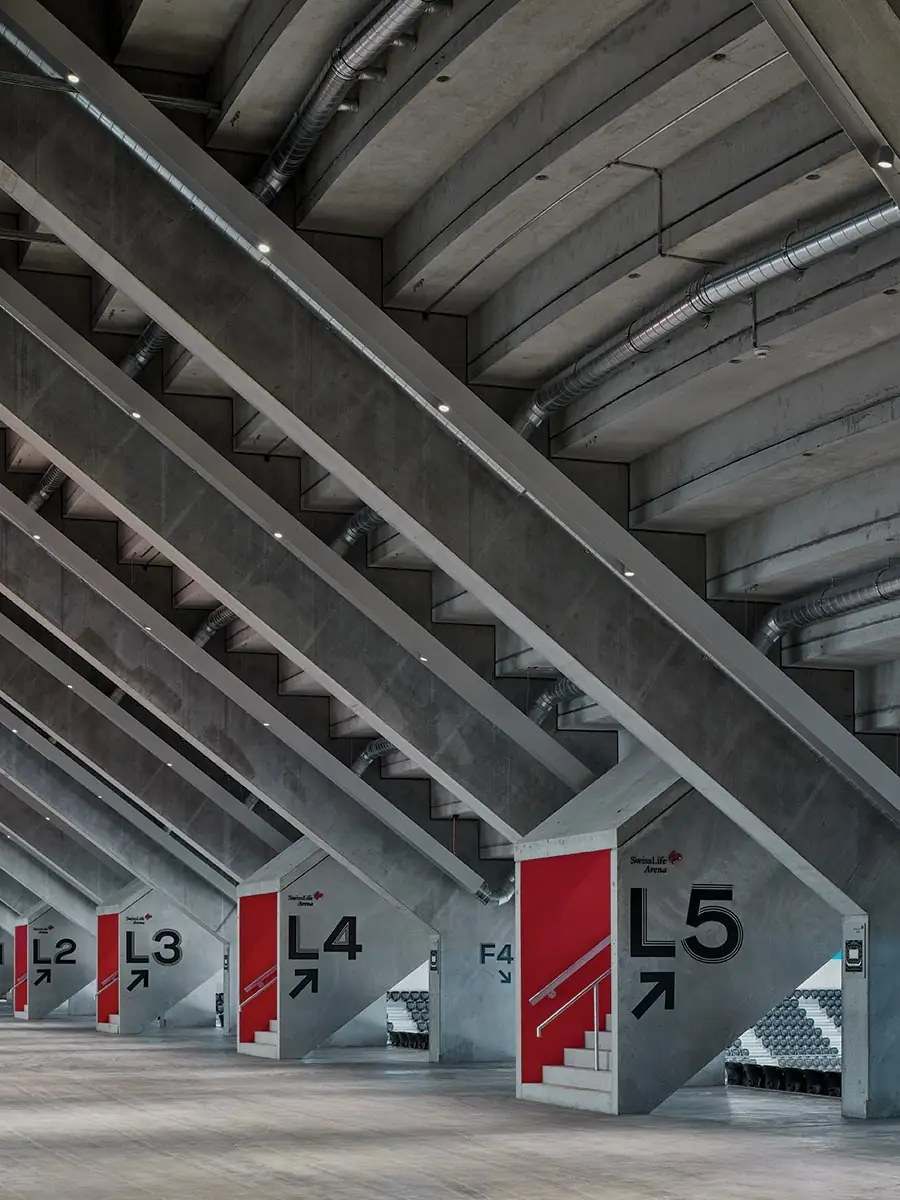
2
The stadium is a destination in itself. The internal arrangement allows Caruso St John to enliven the building’s “front” by placing a long sports bar on the ground floor. For an arena to have an active frontage, especially one punctuated by an array of kooky porthole windows, is remarkable. Literally capping the sports bar is a 40,000-square-foot roof terrace, accessible via two wide exterior staircases from east and west. Populated by food and beverage concessions and featuring a scalloped roofline that mimics the profile of the fluted facades, this space offers up a truly civic moment, with astonishing views of the city to the south across the train tracks.
Often the relationship between a sports team and its host city is implied, or merely something to be marketed. At Swiss Life Arena, the relationship is made real and literal through architecture. It says as much about the amount of time it takes to construct such large-scale buildings as it does about today’s extreme anxieties around deploying resources like concrete that Caruso St John’s joyful Swiss Life Arena can be read as a throwback to more optimistic times. There is an alternative reading, of course. It could instead stand as an exemplar of architects’ taking an inventive approach to what is often treated as a standard building type and creating something that will endure, regardless of the material.
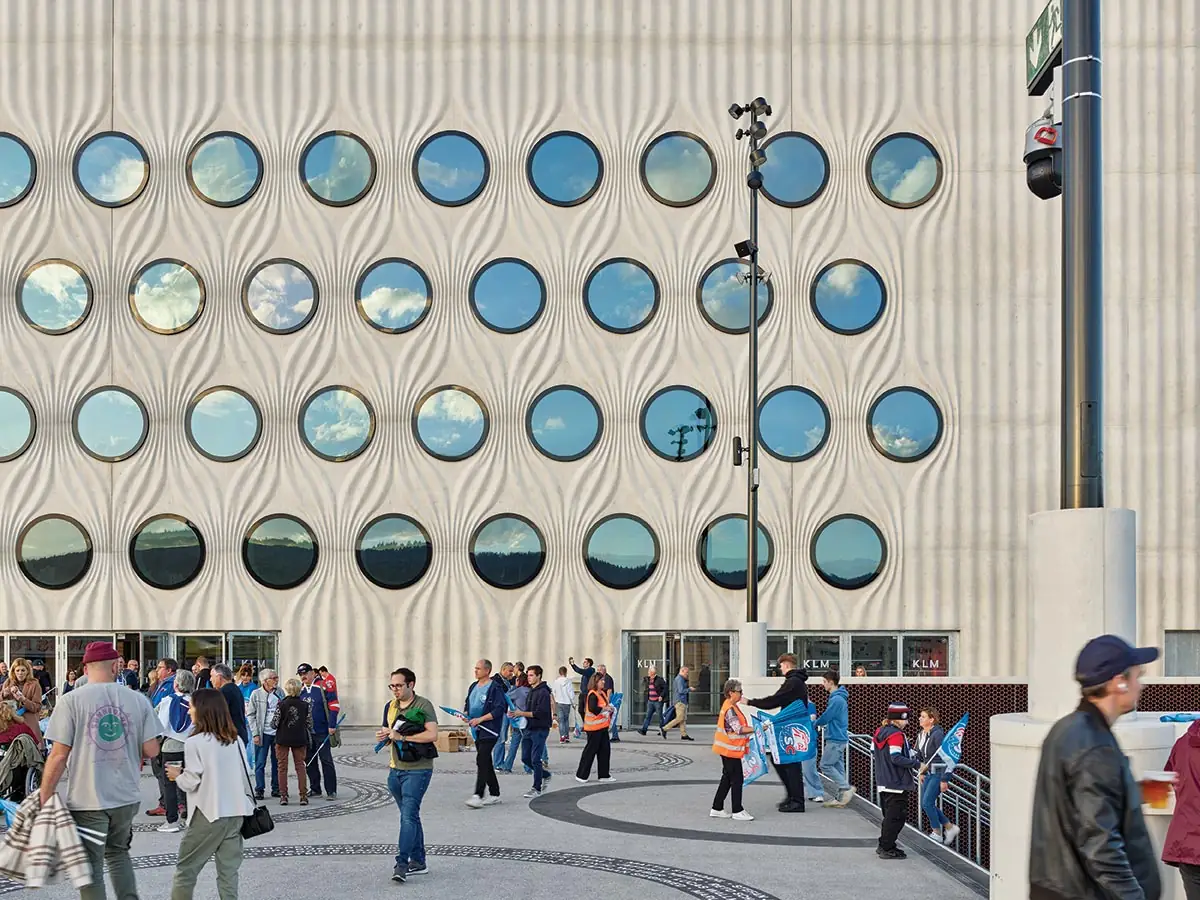
After games, crowds can celebrate on the rooftop terrace. Photo © Philip Heckhausen
Click plans to enlarge
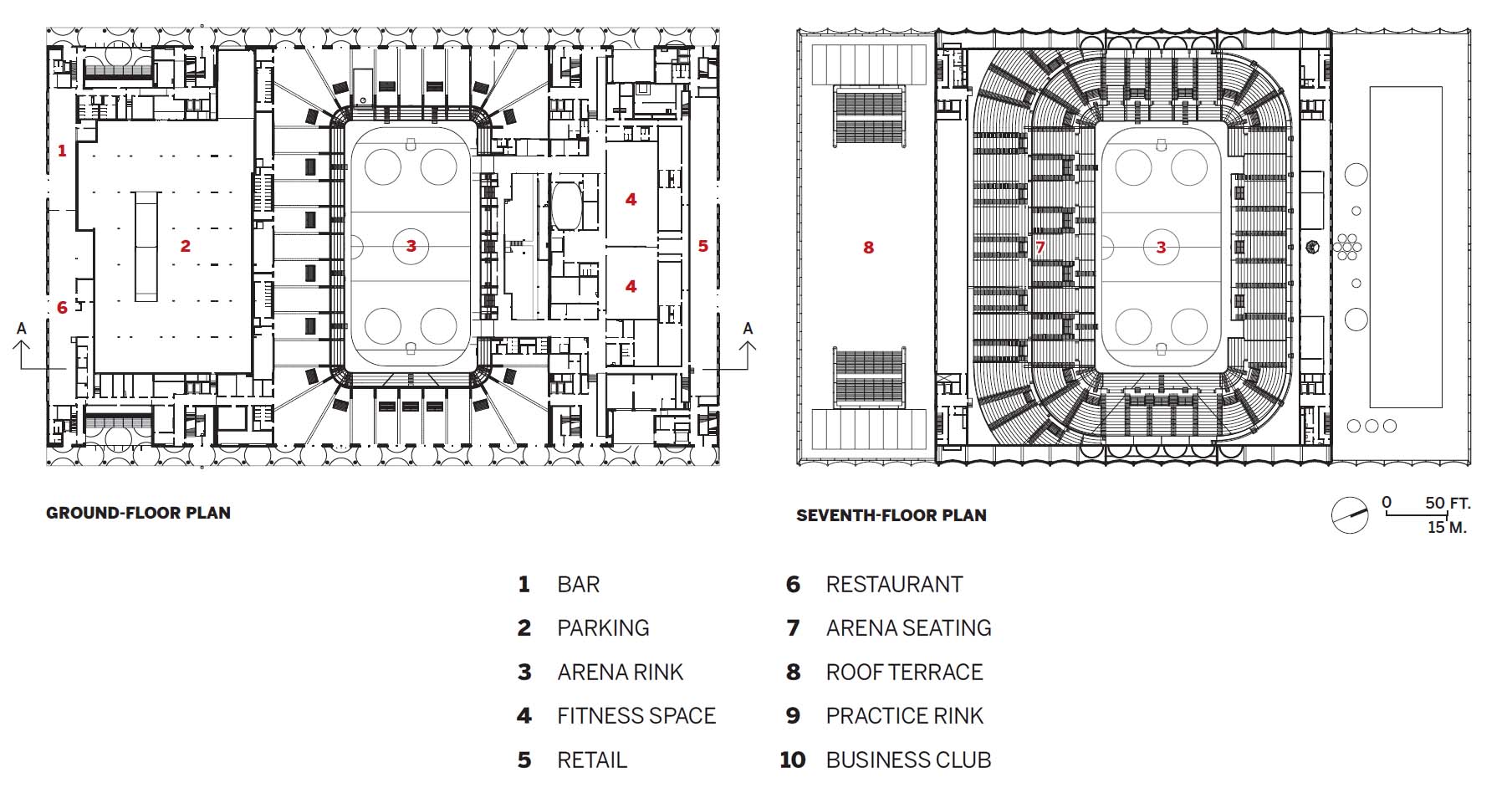
Click section to enlarge
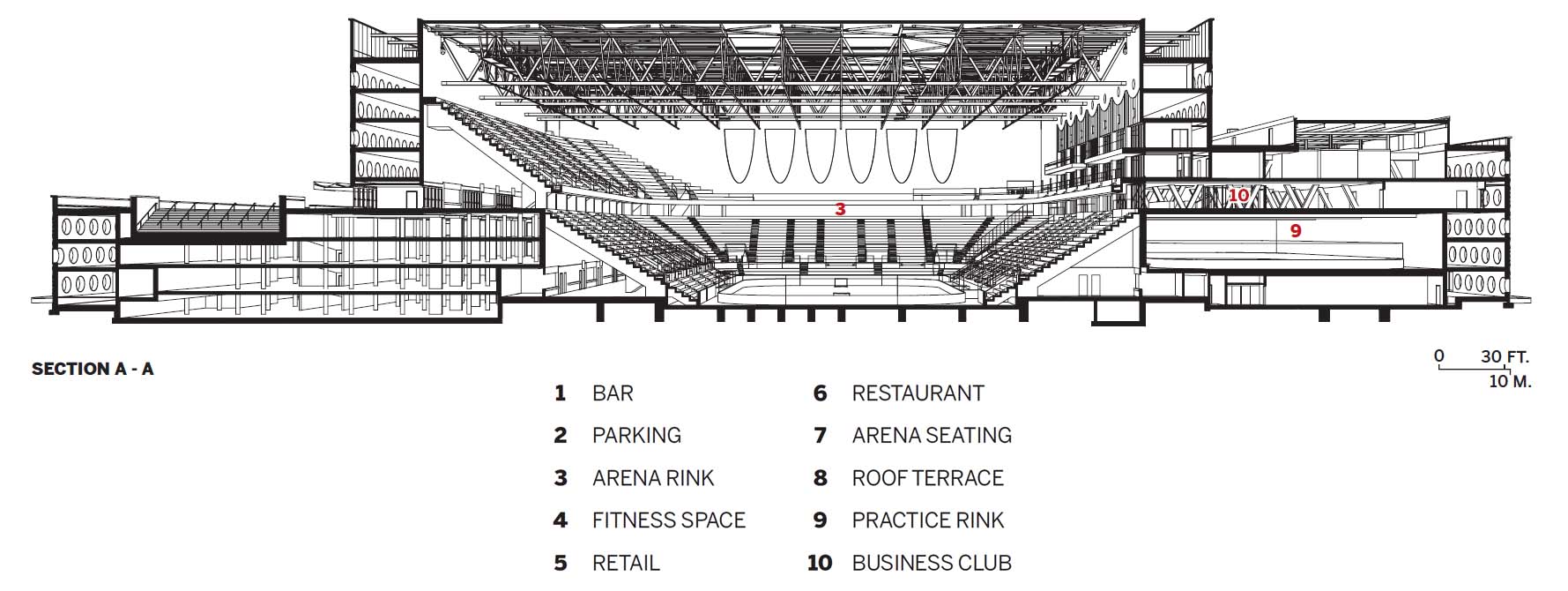
Credits
Architect:
Caruso St John Architects — Adam Caruso, Peter St John, partners; Michael Schneider, project lead; Adriana Müller, project architect
Engineers:
Ferrari Gartmann AG (structural); Kalt & Halbeisen Ingenieurbüro, Amstein & Waltert (services); Enerpeak (electrical); Neuschwander & Morf (facade)
Concrete Contractors:
Marti; Barizzi
Consultants:
Antòn Landschaft (landscape); BAKUS Bauphysik & Akustik (building physics)
Client:
ZSC Lions Arena Immobilien
Size:
767,000 square feet
Cost:
$184 million
Completion Date:
October 2022



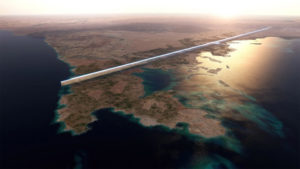
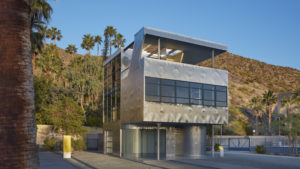
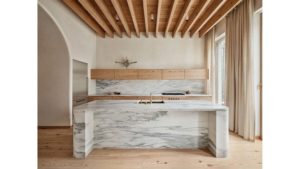
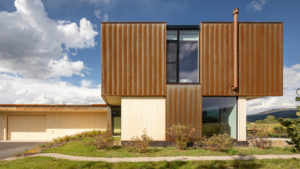
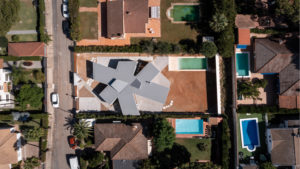
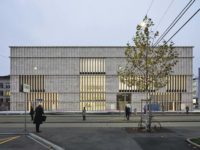
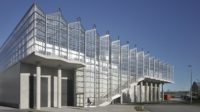
Post a comment to this article
Report Abusive Comment